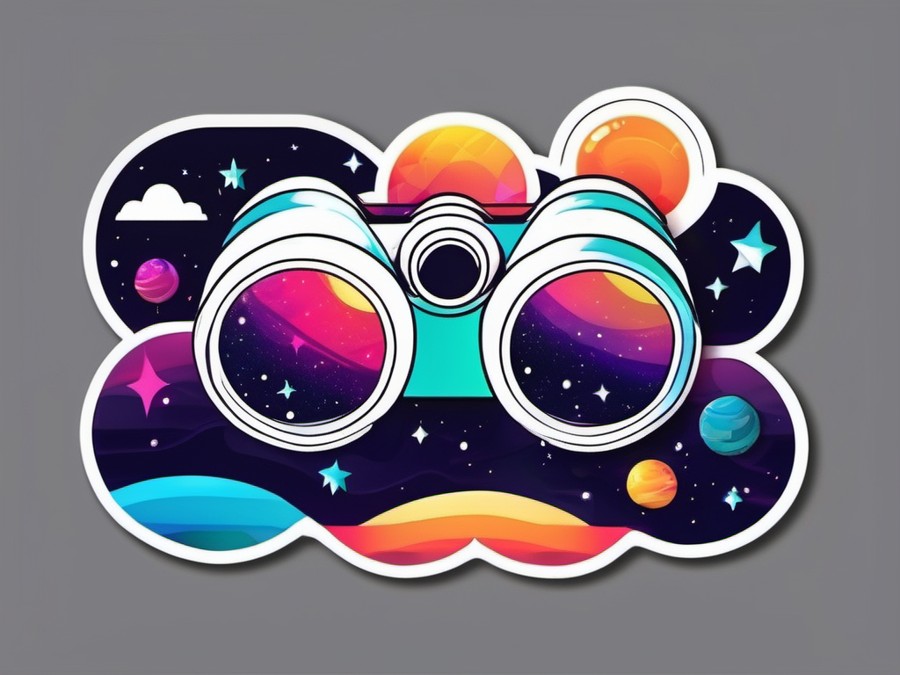· Charlotte Will · Binocular Accessories · 7 min read
What is a binocular carrying case and what features to look for?
Learn about binocular carrying cases, their features, and how to choose the perfect one for your needs. Whether you're a traveler, hiker, or birdwatcher, find the best case to protect and transport your binoculars.

Ever wondered what makes a binocular carrying case so special? Let’s dive into the world of binocular cases, exploring what they are, why you need one, and the key features to look for when shopping. Whether you’re an avid birdwatcher or a casual hiker, finding the perfect carrying case is crucial for protecting and transporting your precious binoculars.
Understanding Binocular Carrying Cases
What is a Binocular Carrying Case?
A binocular carrying case is a protective container designed to securely hold and transport your binoculars. It’s not just about keeping your gear safe; it’s also about convenience and accessibility. Imagine trying to spot a rare bird without your binoculars in hand—frustrating, right? A good carrying case ensures they’re always within reach, ready for action.
Why Invest in a Good Binocular Carrying Case?
Investing in a good binocular carrying case is like buying insurance for your optics. It shields them from dust, scratches, and accidental drops. Moreover, a well-designed case can make your binoculars easier to carry and access. No more fumbling around in your backpack—your binoculars are right where you left them.
Different Types of Binocular Carrying Cases
Binocular carrying cases come in various shapes and sizes. Generally, you’ll find two main types:
- Soft Cases: Lightweight and flexible, these are often made of durable fabrics like nylon or leather. They offer a good balance between protection and portability.
- Hard Cases: Usually made of sturdy materials like plastic or metal, these provide maximum protection. Perfect for those who need to safeguard their binoculars from rough handling or extreme conditions.
Key Features to Look For in a Binocular Carrying Case
Material and Durability
The material of your binocular carrying case matters. Nylon is a popular choice for its durability and light weight, while leather offers a touch of class but can be heavier. Whatever material you choose, ensure it’s built to last and can withstand the elements.
Protection
Protection is paramount when it comes to carrying cases. Look for padding and cushioning inside the case to shield your binoculars from bumps and drops. If you’re an outdoor enthusiast, consider waterproofing to guard against rain and humidity. Nothing ruins a day out like water-damaged optics!
Size and Compatibility
Size matters when choosing a binocular carrying case. Make sure your case is compatible with the size of your binoculars. A loose fit can lead to unnecessary movement and potential damage, while a too-tight fit can be challenging to get in and out.
Portability and Convenience
A good carrying case should be easy to carry. Look for cases with strap options or a belt loop. This way, you can keep your hands free while ensuring your binoculars are always within reach. Compactness is another key factor—you don’t want a bulky case adding unnecessary weight to your gear.
Additional Pockets and Compartments
Extra pockets and compartments come in handy for storing accessories like lens cloths, manuals, or even a small notebook. Having everything in one place makes your life easier and ensures nothing gets lost along the way.
Aesthetics and Style
While functionality is key, the aesthetic appeal of your binocular carrying case can also make a difference. If you’re someone who likes to balance form and function, opt for a case that reflects your style. After all, you’re going to be using it often—why not make it something you enjoy looking at?
Choosing the Right Binocular Carrying Case for Your Needs
For Travelers
If you’re a frequent traveler, compact and lightweight options are your best bet. Look for cases that can easily fit into your luggage without adding too much bulk. A case with a strap or belt loop can also make navigating airports and city streets more convenient.
For Hikers and Outdoor Enthusiasts
For those who love the outdoors, durability and weather resistance are must-haves. A rugged case that can handle the elements will keep your binoculars safe in any terrain. Additionally, easy access features can be beneficial when you need to quickly spot wildlife or check your trail map.
For Birdwatchers
Birdwatching requires quick reflexes and constant vigilance. Choose a case with quick-release closures to get your binoculars out in seconds. Also, a compact design can ensure you’re not weighed down while chasing that rare bird.
For Everyday Use
If you’re a casual user who primarily uses binoculars for occasional events like concerts or sports games, versatility and multi-functionality are key. A case that can double as a protective cover for other gear can be very useful.
Real-Life Examples of Binocular Carrying Cases in Action
Story 1: The Avid Birdwatcher
Meet Sarah, an avid birdwatcher who loves early morning walks in the park. She discovered that a compact, waterproof binocular carrying case was a lifesaver. Sprinting after a rare bird, she stumbled, but her binoculars remained safe inside the padded case. The quick-release strap meant she could get her gear out in seconds, not missing a beat.
Story 2: The Backpacking Adventurer
Then there’s Alex, a seasoned backpacker. He swears by his rugged, hard-shell binocular carrying case. Despite the rough terrain and unpredictable weather, his binoculars have stayed pristine. The case’s durability and waterproofing ensure his optics are always ready for action, no matter what the trail throws at him.
Story 3: The Urban Photographer
Meet Jamie, an urban photographer. He needs a case that’s as stylish as it is functional. His leather binocular carrying case not only protects his gear but also complements his urban aesthetic. The belt loop means he can keep his hands free while capturing the city’s magic.
Common Mistakes to Avoid When Choosing a Binocular Carrying Case
Overlooking Protection Features
It’s easy to get caught up in the aesthetics and forget about the essentials. Don’t overlook features like padding, cushioning, and waterproofing. These are crucial for keeping your binoculars safe from the elements.
Ignoring Compatibility
Ensure your binoculars fit snugly but not too tightly in the case. A loose or ill-fitting case can lead to unnecessary movement and potential damage during transport.
Neglecting Portability
Portability is key, especially if you’re on the move a lot. A bulky case can become a burden. Opt for something lightweight and easy to carry, with useful features like straps or belt loops.
Conclusion
Choosing the right binocular carrying case can make a world of difference in how you protect and transport your precious optics. Whether you’re a traveler, hiker, birdwatcher, or casual user, there’s a case out there designed just for you. By considering features like material, protection, size, portability, and additional compartments, you can find the perfect fit for your needs.
So, gear up and get going—your adventures await!
FAQs
Q1: Can a binocular carrying case also carry other equipment?
A: Yes, many high-quality binocular carrying cases come with additional pockets and compartments designed to hold other gear like lens cloths, manuals, or even small notebooks. This can be incredibly handy for keeping everything you need in one place.
Q2: How do I clean my binocular carrying case?
A: Cleaning your binocular carrying case is straightforward. Most soft cases can be wiped down with a damp cloth and mild soap. For hard cases, follow the manufacturer’s instructions for care and maintenance to keep them in top condition.
Q3: Are custom binocular cases worth the investment?
A: Custom binocular cases can be a great investment if you have specific needs or preferences. They offer tailored protection and convenience that standard cases might not provide. However, make sure the additional cost aligns with your budget and requirements.
Q4: What if my binoculars don’t fit in the case?
A: If your binoculars don’t fit well in the case, it’s time to look for a different one. A loose or tight fit can cause unnecessary damage during transport. Consider cases designed specifically for your binocular model to ensure a perfect fit.
Q5: Can a binocular carrying case be used in extreme weather conditions?
A: Yes, many binocular carrying cases are designed to withstand extreme weather conditions. Look for features like waterproofing, durability, and rugged materials to ensure your binoculars are protected in all elements. This is especially important for outdoor enthusiasts and adventurers.




